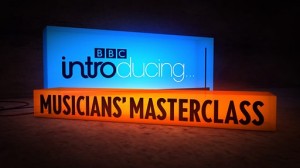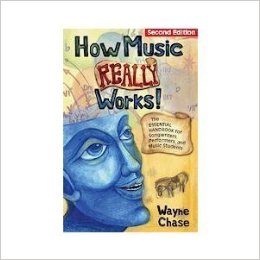It is often easier to sing something than to say it.
Monthly Archives: November 2013
BBC Introducing
The BBC have an amazing program of talks, workshops and shows to encourage new artists. BBC Introducing
As part of this they have master classes. Each masterclass has an hour long session on song writing. For some weird reason they are not available from the home page but they are still there is you search around.
Here is a great session from from Tom Robinson, some really good ideas here.
This session has an interview with Garry Barlow and a longer session with Mark Ronson.
This session has an interview with Brian Higgins
How Music really Works Wayne Chase
This book is not often available on Amazon so there is no picture link. I will give details of how to get a copy later.
It’s a big book (890 Pages) and covers a huge range of subjects. It is also pretty quirky as the author uses wild west stories to make some of his points, but there are some great insights that I haven’t found elsewhere so I recommend checking it out. The first 6 chapters are available free on-line so you have nothing to lose. Read them here
The book ranges very widely so I will focus on just one area here so that you can decide if you want to explore further. One of the most interesting topics for song writers is the Chase chart. This is a diagram showing the harmonic movement of a song. The chords of the harmonic scale are written in a circle and arrows show the movement between them. The arrangement of the chords is rather clever, as you move round the circle clock wise each chord moves down a fifth (with the exception of the bottom chord.) The major chords are on the right and the minor chords are generally on the left. Any chords that are not in the harmonic scale are outside the circle. Here is an example from the book, the Star Spangled Banner,I chose this example because most people will know it. . In just a glance you can see what the song is about harmonically.
If you want a paper copy then the best option is to buy a copy from the publishers website . If you live outside USA/Canada then shipping puts up the price a lot. Another option is to download a PDF, this is what I did as I live in the UK, the only snag with this is that the PDF is protected so you need a special program to open it.
Best bit: The chase chart in chapter 6.
I found it really hard to give this a star rating, some parts are very innovative and really helped my song writing and worthy of 5 stars.. It does vary widely in usefulness so I decided to give it 4 stars, but since you can check out the first half for free I recommend that you see what you think.
Songwriters on Songwriting Paul Zollo
 This is an amazing book. It is a collection of Interviews published originally in Song Talk, the journal of the National Academy of Songwriters. The writers are mostly US based and are mostly from the 1980s and 90s. I didn’t read it from cover to cover initially, I jumped to the interviews with the people I admire most and then slowly read the rest. This is much better than the usual music magazine interview, much longer and far less showbiz, the focus is on the songs.
This is an amazing book. It is a collection of Interviews published originally in Song Talk, the journal of the National Academy of Songwriters. The writers are mostly US based and are mostly from the 1980s and 90s. I didn’t read it from cover to cover initially, I jumped to the interviews with the people I admire most and then slowly read the rest. This is much better than the usual music magazine interview, much longer and far less showbiz, the focus is on the songs.How To Write Songs On Guitar. Rikky Rooksby
If I was only reviewing page 42 of this book it would get 5 Stars. It’s a list of song chords for each key, apparently initially developed to allow you to work out the chords in a song you are listening to. It’s really useful for exploring other areas to take the harmony in a song. The table starts with the usual harmonic scale chords but adds in another half dozen that can work but you might not have though of.
My second favourite part of the book is a large section on song sequences. Rikky takes sequence e.g I-III-IV-V: (in Am this is Am-C-Dm-Em) and then gives lots of examples where it is used. For this sequence the list includes Elvis Costello “I want you”.
There are also good sections on song structures, key changing and melody. Most of the rest of the book is chord diagrams, a pity since most guitarists will already have those.
Best Bit Page 42 Song Chords table
Frank Turner explains “Recovery”
I think this is an excellent video explaining how the parts of a song work.
The Songwriting Secrets of the Beatles Dominic Pedler
This is the best book I’ve read on song writing so far. It uses the Beatles’ songs as examples so that even if I didn’t know a song I could look it up on-line.
The book begins with very simple two and three chord songs, each chapter then adds another layer of interest and complexity. It’s a great book just to read through, and there are lots of points where I suddenly understood how a part of a song worked.
You don’t need to read music to use the book but it helps as a lot of the examples use notation, there is an Appendix, “A beginners guide to music theory” that gives you the basics.
I bought the hardback (almost 800 pages) and the Kindle version. The Kindle is much easier to handle as the paper book is quite chunky. The only downside of the kindle version is that you need good eyesight to read some of the musical examples.
If you buy just one book on song writing then this is the one to get.
Best bit: Appendix 2 “Beatles chords in practice”, some great example of modulation when moving between song sections, e.g. Verse to Chorus or Chorus to bridge.
Songbirds Sing to Keep Warm
The title may not be true, I may have imagined that I heard it on a radio science program.
Coffee Monster
Are those coffee beans on the floor or something more sinister?
A short song inspired by coffee beans, Dr Seuss and Ivor Cutler
First Sunny Day of Summer
I wrote a happy summer song when it was still raining, and then the sun came out so I had to record it in case the weather changed. Feel free to sing along and wear a Caftan if the mood takes you.




